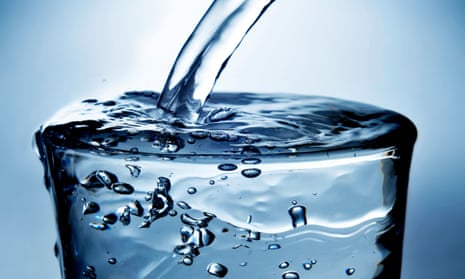Bryan Pullen and Seth Pruzansky have been quietly bottling water in the woods of Maine for nearly a decade – straight from spring to bottle without filtration or treatment. They began selling their “raw water” in 2009 and trademarked the phrase in 2012.
Then last week, the New York Times published an article that thrust their business, Tourmaline Springs, into a harsh spotlight.
The Times’ piece showed how raw water, once a fringe product with supposed health benefits from minerals and bacteria, is going VIP: scoring endorsements from Silicon Valley CEOs and selling for more than $35 (£25) a jug at specialty grocers in San Francisco.
It was a story ripe for viral outrage: a food fad for rich hippies, reinventing a product already available cheaply and safely at home. A flood of articles followed, ridiculing raw water as an overpriced scam, while experts questioned the health claims and warned of diarrhoea-causing pathogens than can lurk in untreated water. But those at the center of it were taken aback by the deluge of anger. Some even got death threats.
“We have received hundreds of messages, [which] ranged from blatant insults to really harsh, hateful statements that we are intentionally poisoning people and ripping them off,” Pruzansky said. “There were two where they threatened to come [and] shoot us.”

The owners of Tourmaline Springs say they resent being lumped in with other businesses they feel are jumping on the raw food bandwagon.
“I call them entrepreneurial opportuni-vores,” said Pruzansky. “People who see a trend and just want to make money. We’re basically the founders of this entire thing. Having other companies copying our efforts and doing it in a way that is potentially dangerous – we’re a little taken aback.”
Pullen, a pilot for American Airlines, said he didn’t have Silicon Valley dollars to help him off the ground. He bought the spring with his own money, he said, plus investment from friends and family, for $2.5m in 2004. He still flies four days a week to help pay off the mortgage.
“We’ve been doing this for a long time, it’s not new,” he said, noting that the spring has been a source of drinking water since the 19th century, and that Maine’s oversight body has certified the water as safe to sell in raw form. “The price they charge out west keeps going up and up,” Pullen added. “It’s getting out of control.”
With a suggested retail price of $2.99 per liter (34 ounces), Tourmaline Springs can hardly claim their water comes cheap. But it’s the price of Live Water, a product sold to customers in the San Francisco and Los Angeles areas, that had dropped the most jaws. Some shops sell a 2.5 gallon jug in a custom-made glass container for $38.49, though buying direct from the company brings the price down to around $12 to $16 for the same amount (plus a $22 refundable deposit for the container).
Live Water’s founder, Mukhande Singh, who began selling water sourced from Oregon’s Opal Springs about a year and a half ago, stands by his product and his prices. While the water itself costs just a penny per gallon for him to buy, the bottle cleaning, manufacturing the custom jugs, staffing and transport all add up, he said.

“I feel like our price is very fair for what we are offering,” he explained. “Live Water is just priceless, a return to living in harmony and a gift that the earth is offering us.” That said, he does hope to lower the cost once the business grows. He said Live Water was “indeed taking advantage of the trend in which people examine where their food and water comes from, and we are grateful that trend is growing”.
Like Tourmaline, water from Opal Springs has been deemed by the local water district as safe to drink; residents enjoy it untreated straight from the tap. But in the small rural community, some say the attention brought by the raw water trend is a mixed blessing.
“People are really proud of their water,” said Mike Peterson, a local resident and vice-president of operations at Earth H20, a company that also bottles water from the spring. Earth H20 treats its water with UV and ozonation and doesn’t consider itself part of the raw water movement. “I don’t know about gut health and that type of stuff,” he said. “My biggest concern is if bad publicity impacts us and everyone else who is bottling.”
Raw water advocates fear the discussion of their water’s origin has been lost in the brouhaha. Springs fed by underground reservoirs, known as aquifers, are the source of Live Water and Tourmaline Springs – not the rivers and puddles many seem to have in mind.
“There is a huge difference between drinking out of a stream in the woods and a spring with a multi-hundred-year history that has been rigorously tested and is within state compliance,” said Pruzansky.

David Sedlak, co-director of the University of California, Berkeley’s Water Center, said underground aquifers can in theory be safe, but the possibility of contamination somewhere down the supply chain is what makes him nervous. Furthermore, he has seen no evidence that microbes in water contribute to health.
“Probably what’s closer to being real is the placebo effect,” he said. “People believe they are consuming something that is beneficial to their health and they feel better.”
For those looking to splash out on water, he suggests an alternative: “Rather than spending $37 for 2.5 gallons of water, drink a glass of tap water and donate that money to a non-profit that can improve water infrastructure and make the water supply safer for people who cannot afford other sources.”
- This article was amended on 10 January to correct a misheard quote from Tourmaline Springs.
